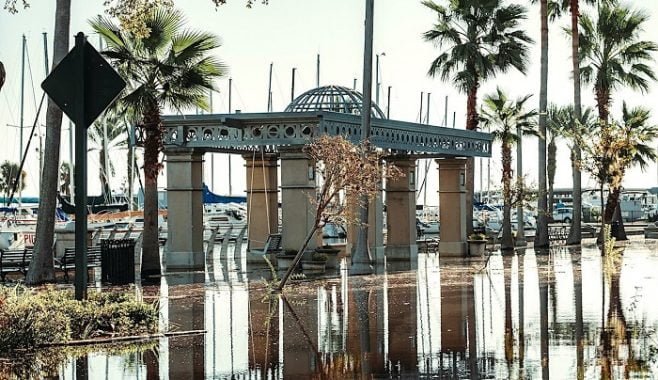Hurricane Ian, a Category 4 hurricane that recently landed along Florida’s southwest coast, left behind catastrophic damage. Drones are a crucial force multiplier in disaster relief and rescue teams as they jump-start recovery efforts in the region.
Utility Asset Inspection and Damage Assessment
Florida Power & Light Company, an electric utility serving more than 12,000,000 people in Florida (FPL), uses its new FPLAir 1 drone to assess the West Coast damage. This fixed-wing drone can fly in strong winds and collect real-time data about the damage from Hurricane Ian. FPL can now quickly get the right crews to the right places and the right equipment, which speeds up restoration efforts.
The drone operators were dispatched by the telecom giant AT&T to remote areas that are too dangerous to be reached by ground personnel. They fly their drones from safe distances and provide wireline and wireless damage assessments to restore workers.
Verizon has also mobilized drone teams from safe zones to inspect the damage to cell towers. Operators have used drone footage to assess the equipment at flooded cell sites in previous disasters. A boat crew can quickly reach the generator and operate it within hours if the aerial video proves that the site can be safely refueled.
The Florida State University Center for Disaster Risk Policy (CDRP) drone team is supporting the state’s urban rescue and search efforts. Drones can provide precise, real-time data that is much more accurate than maps that can be weeks or months old in the aftermath of hurricanes. This information can prioritize resources and save valuable time and lives.
Support From the Drone Community
The drone industry also offered assistance to communities in resolving storm damage faster.
Skydio, the drone maker, has set up a hotline available 24/7 to assist with any aspect of an aircraft’s flight, including accessory or feature issues. This hotline can also be used by industrial users or public safety personnel. The team will also provide an overnight advance replacement for any damaged drone. The company will also offer its complete suite of drone data processing software to all operators affected by Hurricane Ian during the emergency response.
There’s also DroneDeploy, a drone software company whose platform converts aerial information into 3D maps for emergency response teams. DroneDeploy offers qualified organizations short-term free access to its cloud-processing platform for enterprises. It also provides priority support from the company’s crisis response and technical support groups.
What Can Drone Pilots Help?
It is important to recognize the importance of drones in Hurricane Ian’s recovery and response. However, pre-authorized pilots cannot fly at such times as many emergency response flights take place at low altitudes.
To protect emergency response efforts, the FAA frequently implements Temporary Flight Restrictions. Even if there is no TFR, pilots can receive NOTAMs to guide hazardous conditions that could affect their flight.
How Zuper Can Help?
Zuper offers a Field Service Management (FSM) app perfect for mobilizing, organizing, and managing field service technicians and drone pilots to help with recovery efforts.
This disaster restoration software solution offers first responders the ability to manage service requests, schedule & dispatch work crews, location services, timesheet management, and a plethora of popular software integrations. The result is more efficient action and assistance during these times of need.


